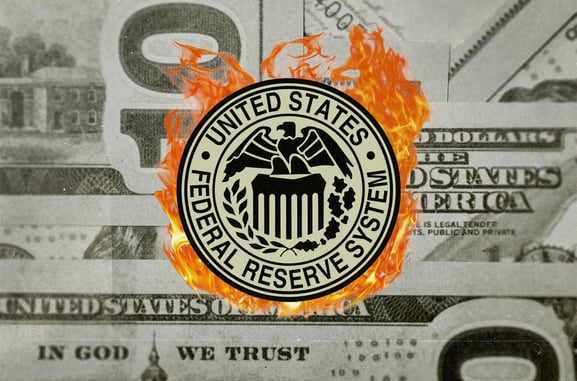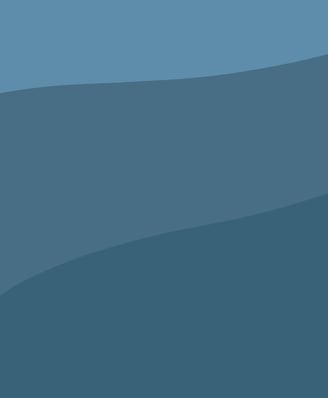
Latest Article: Bitcoin Isn't as Decentralized as You Think. Here's Why.
What is The Federal Reserve?
Learn what the Federal Reserve is, who created it, the secret Jekyll Island meeting, what The Fed does, and the impact it has on the economies of the USA and the world.
BUSINESSECONOMYHOMEPAGE - FEATURES - ROW 2
David Kindness, CPA
12/9/2024



What is The Federal Reserve?
Published on December 8, 2024
Written by David Kindness, CPA
Why you can trust Your Creative CPA
Our content is written, edited, or both by industry experts who are creative entrepreneurs just like you. Learn more.
The Federal Reserve is the central banking system of the United States. As a reserve bank, it manages the US banking system, sets interest rates, and facilitates the printing and distribution of the US Dollar, both domestically and abroad.
It is often referred to as ‘The Fed’, and it was created in 1913 with the passage of the Federal Reserve Act, which was signed into law by President Woodrow Wilson. However, The Federal Reserve is not a government agency, but is instead controlled by 12 member banks who own stock in The Fed and elect its directors and chairmen.
31 years after its creation, in 1944, the dollar became the world’s reserve currency after a historic meeting of bankers, politicians, and world leaders in Bretton Woods, New Hampshire following the end of World War II. Since then, The Fed’s decisions have affected the lives and livelihoods of everyone who uses the US Dollar, both in the United States and around the world.
Who Created The Federal Reserve?
The Federal Reserve Act may have been signed into law by President Woodrow Wilson in 1913, but The Fed’s creation was actually the work of a group of incredibly wealthy and powerful banking families and their political counterparts.
Three years earlier, in 1910, seven of the world’s most powerful bankers, politicians, and their representatives met in secret on Jekyll Island, a then-private island off the coast of the state of Georgia. These men represented an estimated one-fourth of the total wealth of the entire world. They included…
Nelson W. Aldrich: Republican majority whip in the US Senate, Chairman of the National Monetary Commission, financier & banker, and father-in-law to John D. Rockefeller.
Henry P. Davidson: Senior partner at J.P. Morgan, the largest bank on earth at the time, and representative of JP Morgan, one of the wealthiest and most powerful people on the planet.
Charles Norton: President of the 1st National Bank of New York, one of the most influential banks in the country at the time.
A. Piatt Andrew: Assistant secretary of the treasury, economist, and politician.
Frank Vanderlip: President of the National City Bank of New York, a very large bank at the time, and representative of William Rockefeller.
Benjamin Strong: Head of J.P. Morgan’s Bankers Trust Company, and later the head of the banking system.
Paul Warburg: Partner in Kuhn, Loeb & Company, an extremely powerful multinational bank, and representative of the Rothschilds and Warburgs, two of the most powerful banking families in Europe.
During their furtive meeting at the Jekyll Island Club, these men developed a plan to establish a central bank to manage the banking industry - and the flow of money - in the United States. This financial control gives The Fed an incredible amount of power over economics, finance, and politics.
Why Was The Jekyll Island Meeting So Secretive?
The meeting on Jekyll Island was very secretive. So secretive, in fact, that the members of the meeting dressed as fishermen and duck hunters, took a private train car in the night, only referred to each other by their first names, and didn’t admit that the meeting even happened until the 1930s - more than 17 years later.
This extreme secrecy was due to the public’s distrust of the banking system and animosity towards the idea of a central bank. The creators of The Fed knew that if the public caught wind of their plans, they would protest and riot against their plans.
Why Was The Federal Reserve Created?
The Fed’s founders were incredibly intelligent - they understood monetary systems, economic realities, and national power structures better than anyone else, and they were thinking generations ahead of their time. They understood that controlling the money supply is the ultimate form of power in any society.
Whoever controls the money supply can ultimately control…
Politicians: via lobbying, bribes, and investments (insider information).
Companies: via loans, investments, mutual fund & ETF ownership, and laws passed by politicians.
Individuals: via home loans, minimum wage laws, tax laws, investment management, and the cost of goods (food, gas, home necessities, energy, etc).
Inflation: inflation is an invisible tax (check out our article on that), so The Fed can tax you whenever they want without you even knowing it happened.
Effectively, the banks that control the money supply control everything. They are the real source of power in the United States.
Is The Federal Reserve Part of The Government?
The short answer is no. While it was created by an act of Congress in 1913, The Federal Reserve is not part of the US government. Instead, it defines itself as a “politically independent and government entity.”
The name “Federal Reserve” was specifically chosen to make it seem like it is a government agency when it is not. The creators of The Fed knew that the people would be more accepting of its creation if it didn’t sound like a central bank (even though it is one). As a result, The Fed benefits from a widespread belief that it is a government agency - a belief that was carefully crafted by its founders.
The United States is the only large country on earth whose central bank is separate from its government. This results in an unusual power dynamic where the entity that controls the country’s money supply is not directly controlled by its government.
“Permit me to issue and control the money of a nation, and I care not who makes its laws”
An infamous quote attributed to Mayer Amschel Rothschild, the founder of the Rothschild banking dynasty.

What Does the Federal Reserve Do?
The Federal Reserve influences monetary and economic policies, and it has three primary functions:
Monetary Policy
The Fed's most important role is to create and administer monetary policy, which involves managing the United State’s money supply and interest rates. They also influence inflation - the printing and distribution of US dollars.
The Fed manages the US money supply by printing US Dollars and putting them into circulation in the US economy. Because the dollar is the world’s reserve currency, this also affects everyone who uses the US Dollar around the world. They also use interest rates to impact loans, the supply of cash tied up in debt, and more.
Inflation is the devaluation of a currency caused by an increase in that currency’s supply. More dollars = less value per dollar. Inflation is only created by printing US Dollars and putting them into circulation, so The Fed’s act of printing money is the source of inflation in the US. Inflation is also an invisible tax on every US Dollar because it reduces the value of dollars while increasing the quantity of dollars that The Fed controls.
Banking Supervision and Regulation
The Fed oversees and regulates banks and other financial institutions to ensure the banking industry continues operating effectively. They manage loans between themselves and other banks as well as the multiple on cash reserves that banks are allowed to loan to customers. Their goal is to reduce the potential for ‘bank runs’, a situation that occurs when so many people want to withdraw their money that the bank doesn’t have enough cash to honor withdrawals.
Financial Services
The Fed provides financial services to the U.S. government, commercial banks, and other depository institutions. This includes economic planning, investment strategies, mutual fund and ETF strategies, interest rate management, loans, and more.
Does the Federal Reserve Print Money?
The Fed used to literally print money in a printing press, but these days the process is a little more digital. Today, The Fed “prints” money electronically using accounting processes. This is a little technical, but The Fed basically just debits cash (thus increasing it) and credits equity (also known as retained earnings; thus increasing it) in their accounting system.
This creates a debit on the asset side of the balance sheet (cash) and a credit on the equity side of the balance sheet (retained earnings), which creates cash and gives them ownership over it, all while keeping the balance sheet balanced. They can do this indefinitely until the dollar is no longer used - and the creators of The Fed knew this.
Then, when the Fed buys government securities, it transfers this newly-created money into the government, which is then injected into the economy. However, the Fed carefully monitors the money supply to avoid excessive inflation.
How Does the Federal Reserve Impact the Economy?
The Federal Reserve's actions can have a significant impact on the economy. By printing money and adjusting interest rates, the Fed can influence:
Economic Growth: Lower interest rates can stimulate borrowing and investment, leading to economic expansion. Higher interest rates can slow down economic growth.
Inflation: The Fed is a money-printing machine, and money printing is the source of inflation. However, they want to play the inflation game in perpetuity, so if inflation rises too high, they can raise interest rates to remove cash from circulation and reduce the rate of inflation.
Employment, Housing, Cost of Living, Etc: The Fed's policies can affect job creation, housing costs, the cost of goods, unemployment rates, the cost of commodities & necessities, tax laws, government spending, and more.
Federal Reserve Banks
The Federal Reserve is made up of 12 district banks which are located in various cities around the United States. These include…
The Federal Reserve Bank of Boston
The Federal Reserve Bank of New York
The Federal Reserve Bank of Philadelphia
The Federal Reserve Bank of Cleveland
The Federal Reserve Bank of Richmond
The Federal Reserve Bank of Atlanta
The Federal Reserve Bank of Chicago
The Federal Reserve Bank of St. Louis
The Federal Reserve Bank of Minneapolis
The Federal Reserve Bank of Dallas
The Federal Reserve Bank of Kansas City
The Federal Reserve Bank of San Francisco
How to Live With The Fed While Staying Creative
Understanding the Federal Reserve and its role in the economy is important for businesses and individuals alike. By staying informed about the Fed's actions, you can make informed decisions about your financial planning and business strategy. The Fed is incredibly powerful, and barring a full-scale uprising, they aren’t going anywhere anytime soon.
You can do your part to influence The Fed’s actions by voting for politicians who are aware of the realities of the Federal Reserve and their impact on the economy, and who are willing to put US citizens first.
You can also do your part by creating your art with love, kindness, thoughtfulness, and wisdom for yourself and for others. Educate people with kindness when you get the opportunity, and stay open-minded and able to discuss the topics discussed here with patience and consideration.
Frequently Asked Questions (FAQs)
What is the Federal Open Market Committee (FOMC)?
The Federal Open Market Committee is a committee within the Federal Reserve that makes decisions about monetary policy, inflation, interest rates, bank's cash reserves, and more.
What is Quantitative Easing (QE)?
Quantitative easing is a monetary strategy used by The Fed to increase the money supply by purchasing government securities such as bonds and treasury bills. They do this by printing US Dollars and using them to purchase government debt. Once the federal government has the cash, they can spend it in the economy to increase the amount of money in circulation.
Does The Fed Own the Government’s Debt?
As of the third quarter of 2024, The Fed owns 4.732 trillion dollars of federal government debt. This amount changes every time The Fed buys or sells government debt such as Treasury Bills, Treasury Bonds, Treasury Notes, Treasury Inflation-Protected Securities (TIPS), and Floating Rate Notes (FRNs).
Disclaimer: the information provided in this article is for educational purposes only and does not constitute tax, accounting, investing, legal, or financial advice. The information in this article does not take into account your unique financial or business situation or goals, and YCCPA cannot be responsible for reader's financial decision-making. YCCPA's goal is to educate and support you on your creative business journey.
Written by David Kindness, CPA
David is a CPA (Certified Public Accountant) and professional photographer, videographer, and designer based in San Diego, California. Learn more.




supported by ads
Your Creative CPA is supported by the ads you see in our articles and guides.
These ads help us help creatives like you.

financial wisdom for creatives, by creatives
Created by David Kindness
Copyright 2025 Terms






